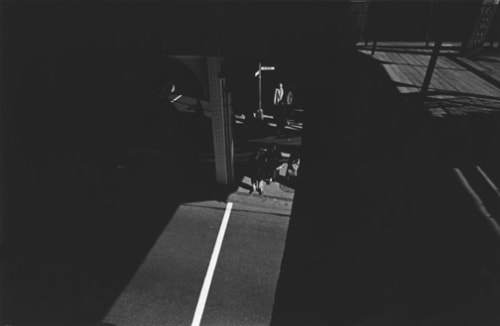Born in Detroit in 1912, Harry Callahan was a self-taught photographer. Callahan began taking pictures in his hometown Detroit for fun, opting for an inexpensive point and shoot camera over an expensive 16mm movie camera. In 1941 he joined a camera club and while there met celebrated photographers of the previous generation including Ansel Adams who gave a workshop for the class. After studying engineering at Michigan State University, Callahan worked as a photographic technician for General Motors, but was hired in 1946 by László Moholy-Nagy to teach photography at the Institute of Design (ID), Chicago. Initially established as the New Bauhaus, the ID was at the forefront of innovative methods of education and teaching photography in America in the mid-20th century. In 1948 Callahan met Edward Steichen, who responded strongly to his work, including it in numerous shows at the Museum of Modern Art, New York. In 1961, Callahan left Chicago to head the photography department at the Rhode Island School of Design, Providence with his friend and former ID colleague Aaron Siskind. He stepped down from the chairmanship in 1973, but continued teaching at the school until his retirement in 1977.
Callahan often transformed his everyday subjects—nature, architecture, city streets, his wife Eleanor and daughter Barbara into simple forms, a visual essence that still evokes their worldly counterparts. Callahan’s goal, however, was to describe, not to conceal or distort. For each new subject, he refreshed his photographic vocabulary and used his 8×10 view camera and strong sense of design and composition to create meticulously crafted and elegant images.
Biographic text courtesy of the Museum of Contemporary Photography
SELECTED COLLECTIONS:
Museum of Contemporary Photography, Chicago
Museum of Modern Art, New York
International Museum of Photography, George Eastman House, Rochester, NY
